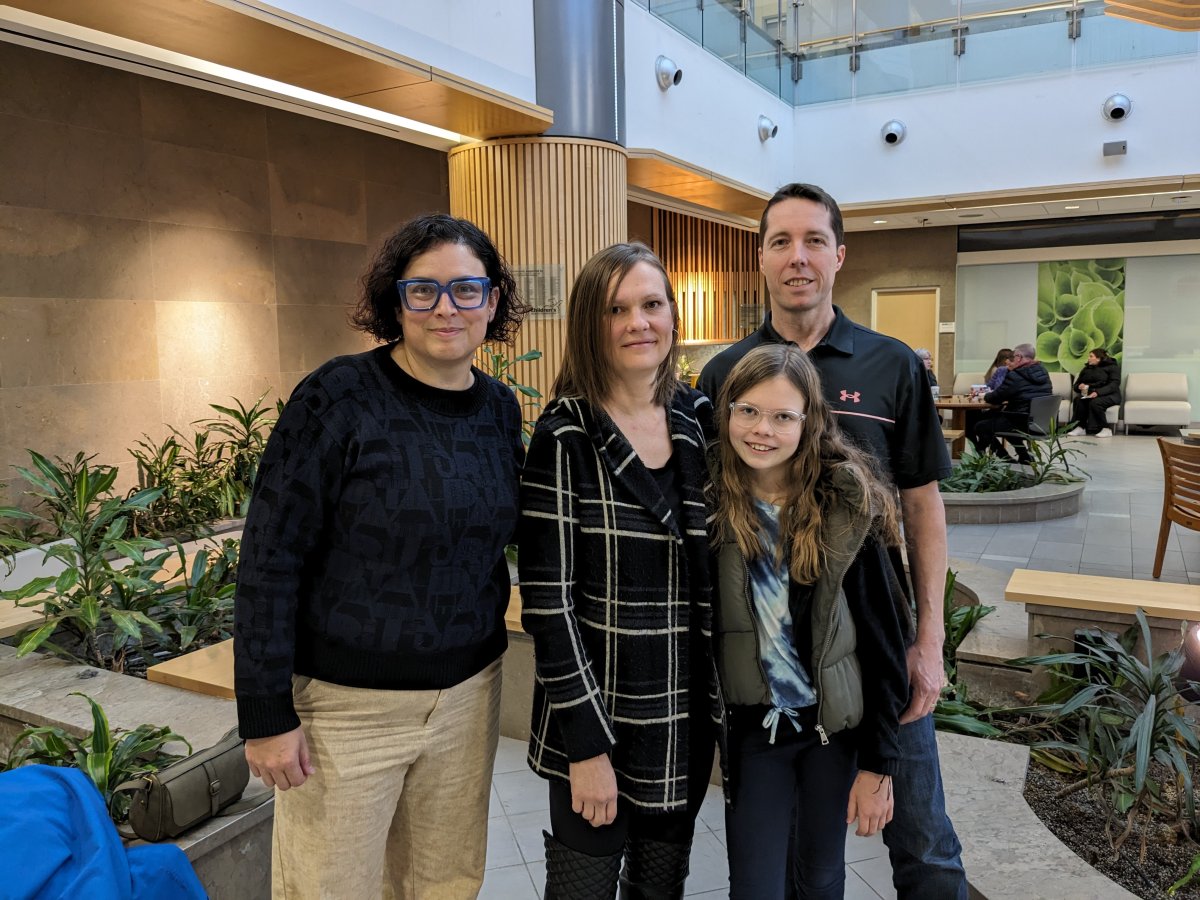A Canada first procedure to treat paediatric epilepsy has taken place at the Children’s Hospital at London Health Sciences Centre (LHSC).

11-year-old Londoner Makayla Douglass was diagnosed with epilepsy when she was only a year old and was suffering up to 30 seizures a day, but the procedure, called radiofrequency thermocoagulation, has resulted in her being seizure-free for the past six months.
Epilepsy is the most common neurological condition in paediatrics, according to the doctors treating Makayla, affecting one in 100 children in Canada. Last year, she became the first paediatric patient in Canada to undergo the new treatment with the assistance of a high-tech robotic arm.
Radiofrequency thermocoagulation uses radio waves through electrodes to heat and destroy tissue in the areas of the brain that are causing the seizures.
“Traditionally, the patient requires a craniotomy, meaning that the neurosurgeon will take off the skull, go into the brain and remove the area that is causing the seizures,” says Dr. Andrea Andrade, director of the pediatric epilepsy program at Children’s Hospital at the London Health Sciences Centre.
“Having the ability to have those electrodes placed in the area of interest via the robotic arm, our neurosurgeons were able to treat the area where her seizures were coming from without opening the skull.”
Andrade says the robotic arm used in the procedure, the ROSA One Brain, is a game changer, allowing surgeons to access deep areas of the brain that typically couldn’t be operated on.
“We are now trying to…decrease the scare that epilepsy surgery typically causes some people, and to tell families that (surgery) is not only for the most severe cases. We can look into those possibilities to reduce seizures and improve quality of life, which is the most important thing.”
According to Andrade, five other children have undergone the same procedure, and all have come out with their seizures lessened.
The ROSA arm was donated by the Children’s Health Foundation last year. Nash Syed, the president of Children’s Hospital, says that procedures like this wouldn’t be possible without their donors.
“(The) Children’s Health Foundation allows us to buy equipment, life saving equipment, high quality experience equipment that makes us do the job that we do. The ROSA robot is one example of that, allowing us to do these precision surgeries that couldn’t be done otherwise.”
The first time the minimally invasive surgery was performed, Makayla’s seizures were reduced by 70 per cent. Seeing the success of the first run, the Douglass family decided to have the procedure done a second time
“We waited a long time before we proceed with the surgery,” says Makayla’s father Jeff Douglass. “Had we gone a couple years earlier, it wouldn’t have happened. So, it’s absolutely incredible that she was able to be the first.”
Makayla’s mother, Jeannie, says even six months on, it still feels surreal.
“You always think it could happen again. But I’m just going to trust that we’re good. The further out we get, the more real it seems.”




Comments